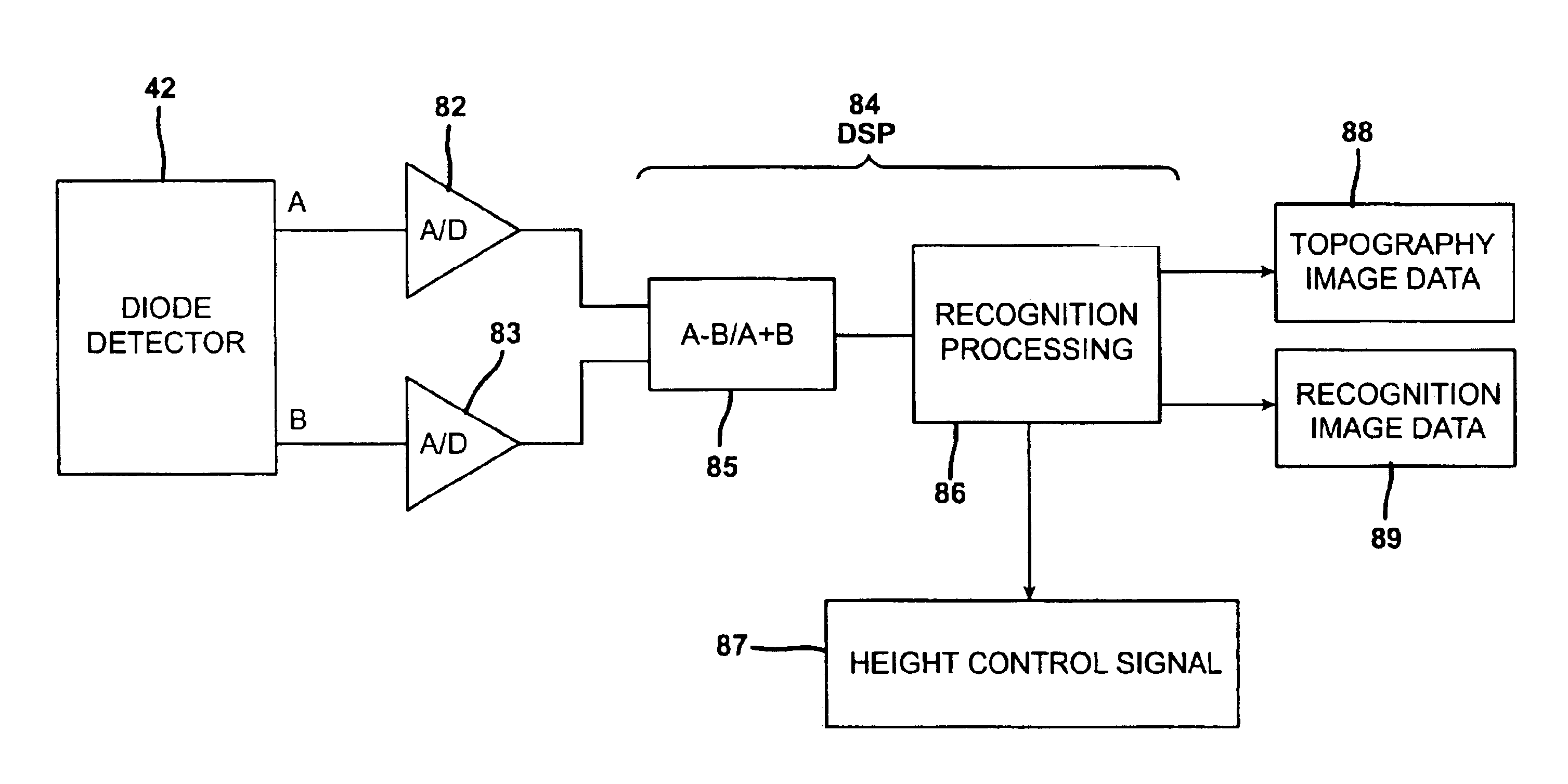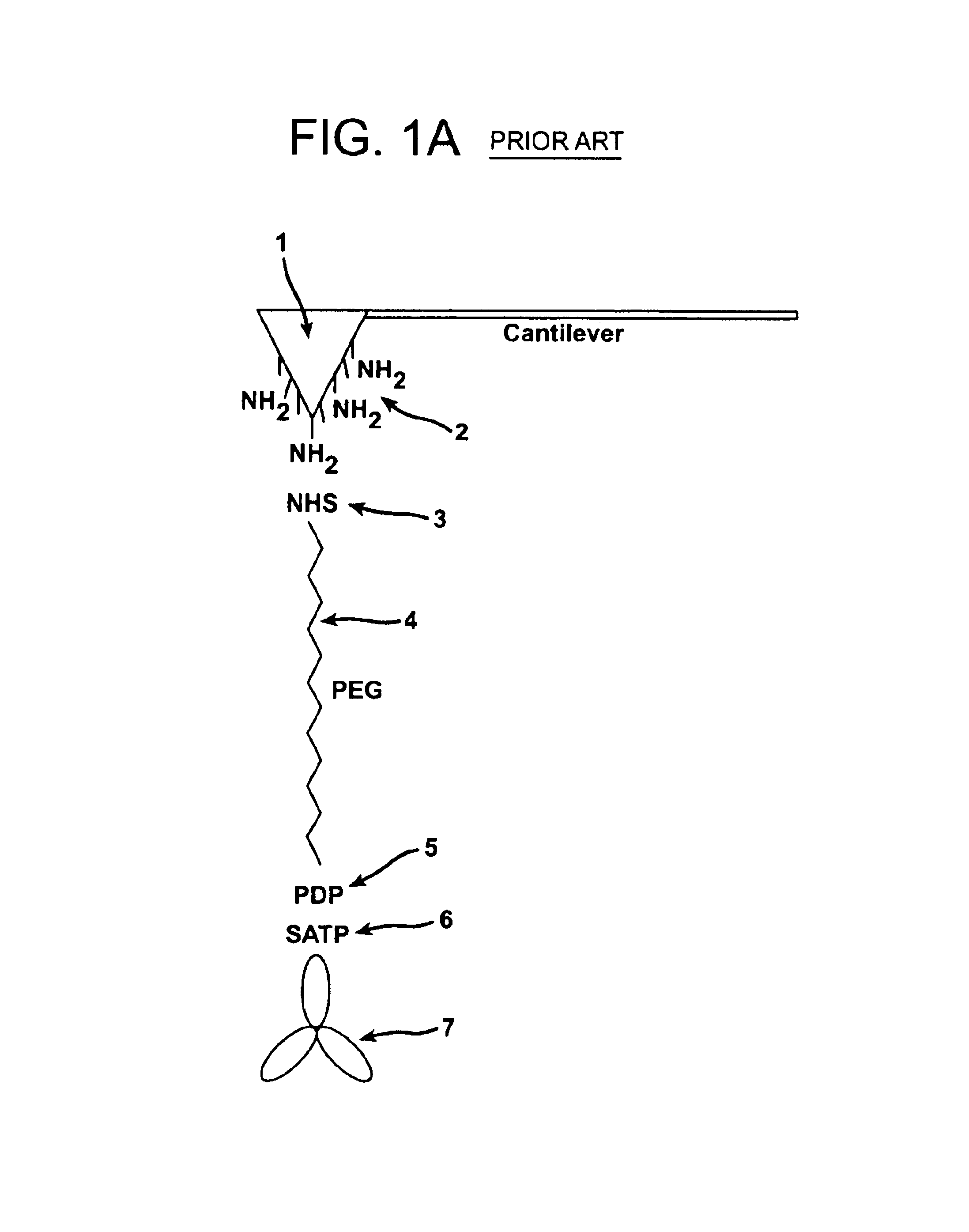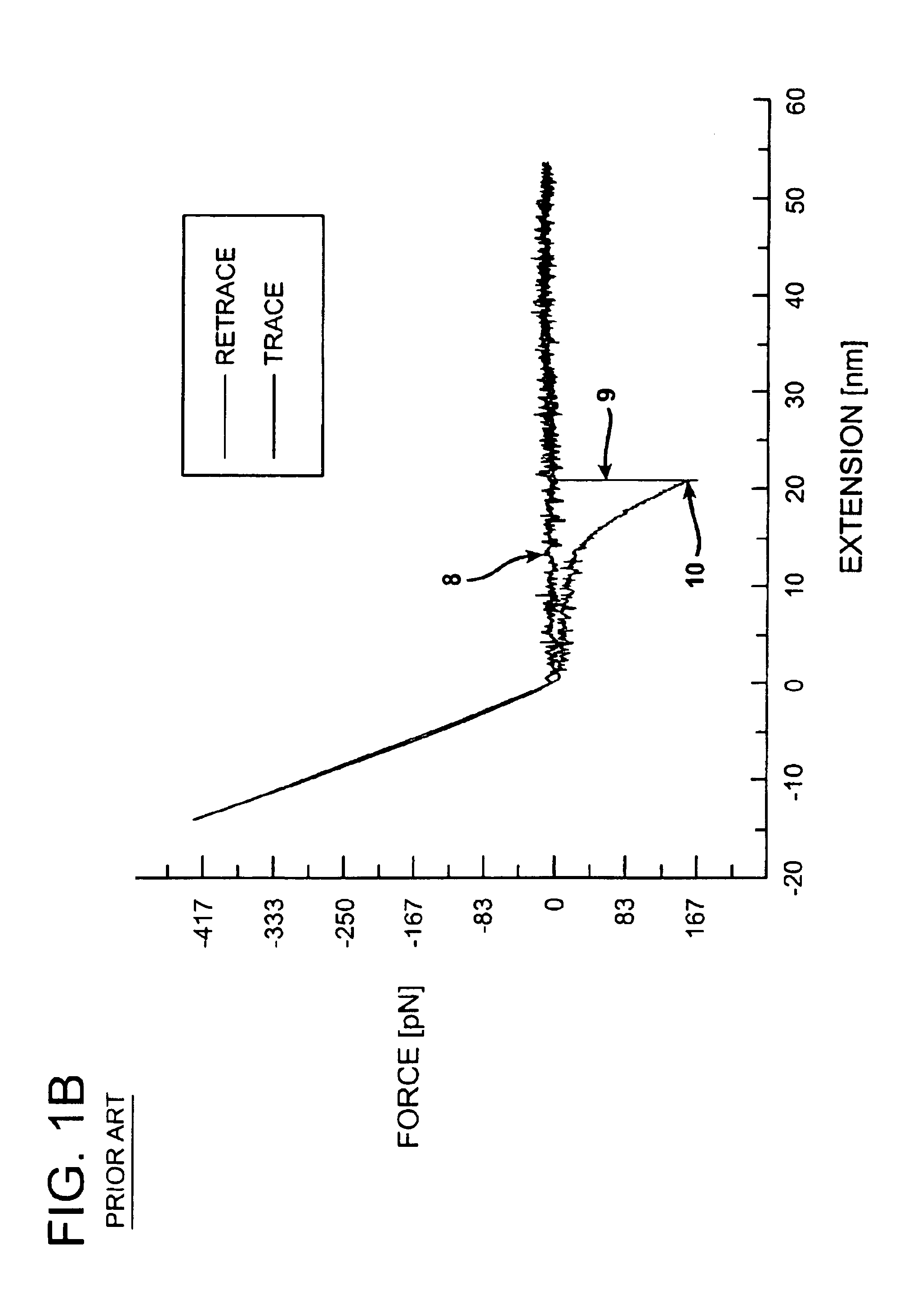Topography and recognition imaging atomic force microscope and method of operation
- Summary
- Abstract
- Description
- Claims
- Application Information
AI Technical Summary
Benefits of technology
Problems solved by technology
Method used
Image
Examples
Embodiment Construction
[0043]The present invention provides a novel apparatus and method for a molecular force recognition microscopy (MFRM) operational mode that is capable of recording recognition and topography images simultaneously and independently. When an atomic force microscope cantilever with a low mechanical Q factor is oscillated in a fluid, the amplitude at the top of the cantilever swing is not related to the amplitude at the bottom of that swing when the tip intermittently contacts a surface. Such independence is nearly complete for cantilevers operated with a Q factor of greater than zero but less than about 2 to 3, but is still evident to some extent with cantilevers with a Q factor of less than about 20. Cantilevers with low Q-factors (approximately 1 in liquid) that are driven at frequencies below resonance contain recognition and topographic information that are well separated. The time resolved oscillation signals are specially processed before they are fed back into a microscope feedb...
PUM
 Login to View More
Login to View More Abstract
Description
Claims
Application Information
 Login to View More
Login to View More - R&D
- Intellectual Property
- Life Sciences
- Materials
- Tech Scout
- Unparalleled Data Quality
- Higher Quality Content
- 60% Fewer Hallucinations
Browse by: Latest US Patents, China's latest patents, Technical Efficacy Thesaurus, Application Domain, Technology Topic, Popular Technical Reports.
© 2025 PatSnap. All rights reserved.Legal|Privacy policy|Modern Slavery Act Transparency Statement|Sitemap|About US| Contact US: help@patsnap.com



